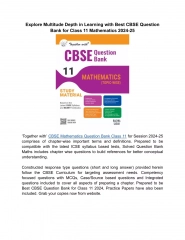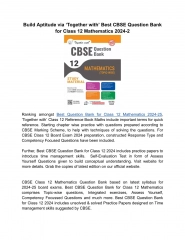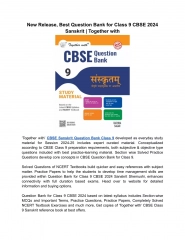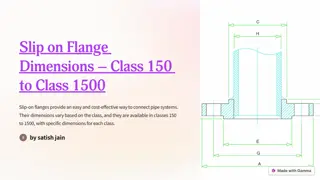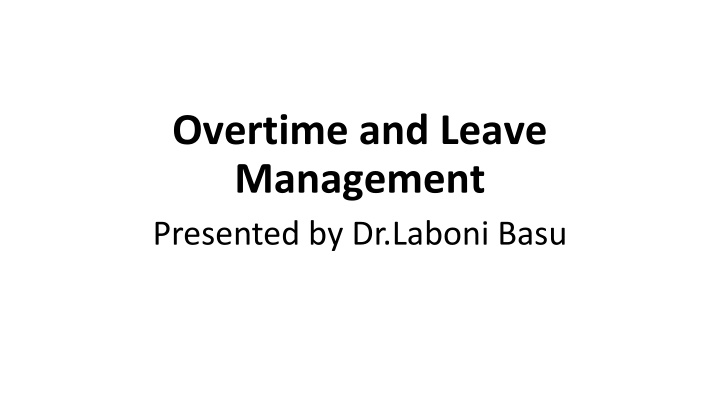
Effective Overtime and Leave Management Strategies
"Learn the essentials of managing overtime and leave effectively in human resource management. Explore data recording systems, approval processes, and key practices for successful management. Get insights on software and tools for seamless management of employee hours and leaves."
Uploaded on | 1 Views
Download Presentation

Please find below an Image/Link to download the presentation.
The content on the website is provided AS IS for your information and personal use only. It may not be sold, licensed, or shared on other websites without obtaining consent from the author. If you encounter any issues during the download, it is possible that the publisher has removed the file from their server.
You are allowed to download the files provided on this website for personal or commercial use, subject to the condition that they are used lawfully. All files are the property of their respective owners.
The content on the website is provided AS IS for your information and personal use only. It may not be sold, licensed, or shared on other websites without obtaining consent from the author.
E N D
Presentation Transcript
Overtime and Leave Management Presented by Dr.Laboni Basu
Overtime and leave management are essential aspects of human resource management, and the process of managing them involves several steps and data recording systems. Overtime Management 1. Data Recording Systems 2. Overtime Recording 3. Approval Process: Leave Management 1. Data Recording Systems: 2. Leave Recording: 3. Approval Process
Overtime Management Data Recording Systems: Organizations use various data recording systems to capture and process overtime data. Some common systems include: - Time and Attendance Software: These systems track employees' working hours, including regular hours and overtime hours worked. - Payroll Systems: Payroll software records and calculates overtime hours to ensure accurate compensation for employees. - HRIS (Human Resource Information System): HRIS stores and manages employee data, including overtime records and approvals.
Overtime Recording Overtime Recording: Employees record their overtime hours through time tracking systems or by filling out timesheets. Supervisors and managers verify the accuracy of the reported overtime hours.
Approval Process Approval Process Once overtime hours are recorded, employees submit their overtime requests through an HR system or directly to their supervisors. Supervisors review and approve the overtime requests based on the organization's policies and budget constraints. HR personnel or payroll administrators verify the approved overtime hours before processing the additional compensation.
Leave Management Data Recording Systems: Leave Management Software: This type of software allows employees to request leave, and managers to approve or deny those requests. It also tracks and records different types of leave, such as vacation, sick leave, and personal days. HRIS: Similar to overtime management, HRIS is used to record and store employee leave data, including balances and history.
Leave Recording Leave Recording Employees submit leave requests through the organization's leave management system, specifying the type of leave, dates, and any relevant details. Leave balances and accruals are updated in real- time in the HRIS.
Approval Process Approval Process Supervisors or managers review and approve leave requests based on the organization's leave policies, staffing needs, and the employee's available leave balance. Once approved, the leave request is recorded in the system, and the employee's leave balance is adjusted accordingly.
In summary In summary, the management of overtime and leave involves the use of various data recording systems to capture, process, and store employee data. These systems streamline the recording, tracking, and approval processes, ensuring accurate and efficient management of employee time and leave.
List income tax - related investments and declaration from and evidence required with it. Discuss in details in Human resource management in India 1. Provident Fund (PF) - Investment: Employees' Provident Fund (EPF) - Evidence required: Form 16, payslips reflecting PF deductions, PF account statements 2. Gratuity - Investment: Gratuity Fund or Group Gratuity Scheme - Evidence required: Gratuity policy document, contribution statements, and nominee details 3. National Pension System (NPS) - Investment: NPS contributions - Evidence required: NPS contribution statements, PRAN card
List income tax - related investments and declaration from and evidence required with it. 4. Tax-saving investments Investment: Equity Linked Savings Schemes (ELSS), Public Provident Fund (PPF), National Savings Certificate (NSC), Tax-saving Fixed Deposits, etc. - Evidence required: Investment proofs, receipts, or statements from the respective institutions 5. House Rent Allowance (HRA) - Declaration & Evidence: Rent receipts, lease agreement, and declaration for claiming HRA exemption 6.Leave Travel Allowance (LTA) - Declaration & Evidence: Proof of travel and related expenses, including tickets, boarding passes, and travel invoices
In managing these investments and declarations, the HRM department typically follows these processes: 1. Investment declaration: At the beginning of the financial year, employees are required to declare their investment plans for various tax-saving instruments to avail of tax benefits. These declarations are collected, verified, and recorded by the HR team. 2. Proof submission: Employees need to submit documentary evidence to support their investment declarations. The HR department collects and verifies these proofs to ensure compliance with tax regulations. 3. Record maintenance: The HR team maintains comprehensive records of investment declarations, proofs submitted, and tax exemptions availed by each employee. These records are crucial for tax assessments, audits, and employee queries.
In managing these investments and declarations, the HRM department typically follows these processes: 4.Tax computation and compliance: HRM works closely with the finance and accounts departments to ensure accurate computation of taxes, deductions, and exemptions based on the declared investments and proofs submitted. Compliance with tax laws and regulations is a key aspect of this process. 5.Employee communication: The HR department communicates with employees regarding the status of their investment declarations, reminders for submission of proofs, and guidance on tax-saving options.
CONCLUSION Overall, effective management of income tax- related investments and declarations is essential for ensuring tax compliance, employee tax savings, transparent and efficient HR processes in India. maximizing maintaining and


